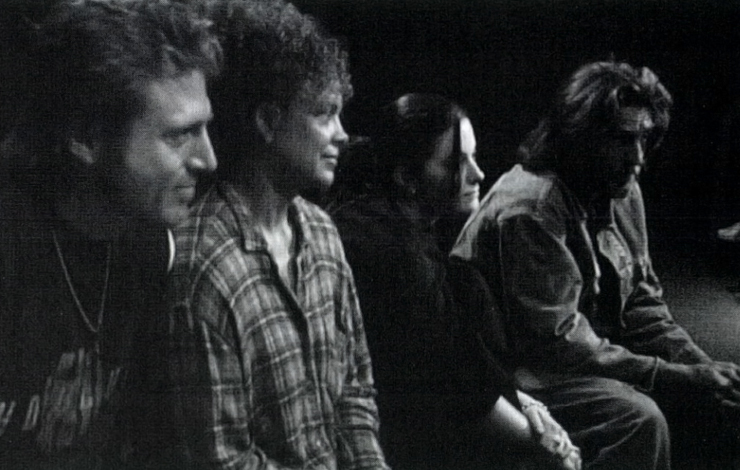
This year I found myself going into production on two feature-length documentaries at the same time. I described the development process in an earlier article—how I arrived at shooting one film, on the American Presidency, in an eclectic style that would change as the Presidents we covered changed, and the other, a documentary I was making on my own about professional actors, that would be shot more like cinema vérité. I discovered that when you make two very different films like this, similar problems crop up and seem more apparent because you’re looking at the same issue under different circumstances. One in particular is a major concern for people who make documentaries. It’s access—access to the people and places that will become the reality of your film.
Given a certain amount of planning, under circumstances we believe we can predict, we know that we can get inside, say, a crack house, if that’s our subject. We know people there, they’re cool with us and we’ll be able to shoot there. So, we’re ready to go on our crack house epic, and that week the crack house is busted—remember, this is reality—and everything changes. Our people are gone, the building could be gone. We’ve lost access. Who’s going to call HBO?
Or we’re doing something that could be easier—maybe a film on heart transplants. We’ve found our person with a new heart, and we’ve connected with the family that donated the old heart. But we find out that the nice gentleman who had a transplant is unfortunately back in the hospital with complications. And the family just changes its mind. No problem. At least we’ll film our cooperative subject’s new operation. But an institution is now involved. The hospital says no. There are hygiene problems, permit complications, insurance issues.
In the case of our President film, other issues, of security, came up. “Sorry, but we’re at war, you know,” we were respectfully told at the White House, and we weren’t encouraged to take that lightly. We were allowed to shoot on the street in front of the White House (DC turf), but not on the sidewalk a step above it (National Park Service turf and closed for now to cameras.).
Wherever we go, there are issues and problems and complications, but this is one reason people watch documentaries; they’re seeing things they might not see that easily. These access concerns get in our way, but we don’t want them to stop us. Like both the presidents and actors I’ve been looking at, we try to find any way to get the job done. The important thing is not to compromise the film by giving up. We persist, we pester, we cajole, we call in favors. But we try not to lie—except when we tell them how long it will take and how easy this will be, but those lies are allowed by the documentary police.
Gatekeeping staffs often act like firewalls, sometimes when the organization or individual they represent might be happy to participate. One way to handle this is to convince them not that it’s a great movie made by great people, but that the boss might really want to do this and will find out about it somehow anyway. But remember, no lying. The gatekeeper will do you in for that, or in my case at the Mark Taper Forum, accuse you of it. So, the actor film will not have the Taper in it, but a carefully chosen substitute is a good solution, and often better in the end, and there are about 10,500 other theaters.
We found one interesting solution to an access problem in our actor film that can work if we do it carefully and with some distance. I wanted to profile a movie or play from rehearsal to opening and bring it to the acting class we were working with for a critique, but who would ever let us do that? So we used a dramatic project of my own that I plan to shoot next, if we ever work out the access problems of these two documentaries. With the approval of the actors, we’re following the project from early readings to final screening, and the only person who will probably object is me, and I won’t listen.
But sometimes you don’t want to substitute, or can’t, without losing enormous values. And this is where persistence and professionalism and sometimes aggressiveness come in. We had a definite no from the FDR Memorial. Nobody supposedly shoots there. It’s a magnificent place and I felt we needed it. Jenny McGonigal, our co-producer, found ways that could make it happen. It did.
And it certainly wasn’t easy to change the date of President Clinton’s interview as often as his staff needed to, which was very very often. Nobody gave up. President Clinton turned out pretty good.
Chuck Workman’s documentaries include The Source and Andy Warhol, Superstar. His new dramatic film, A House on a Hill, will be released later this year.
